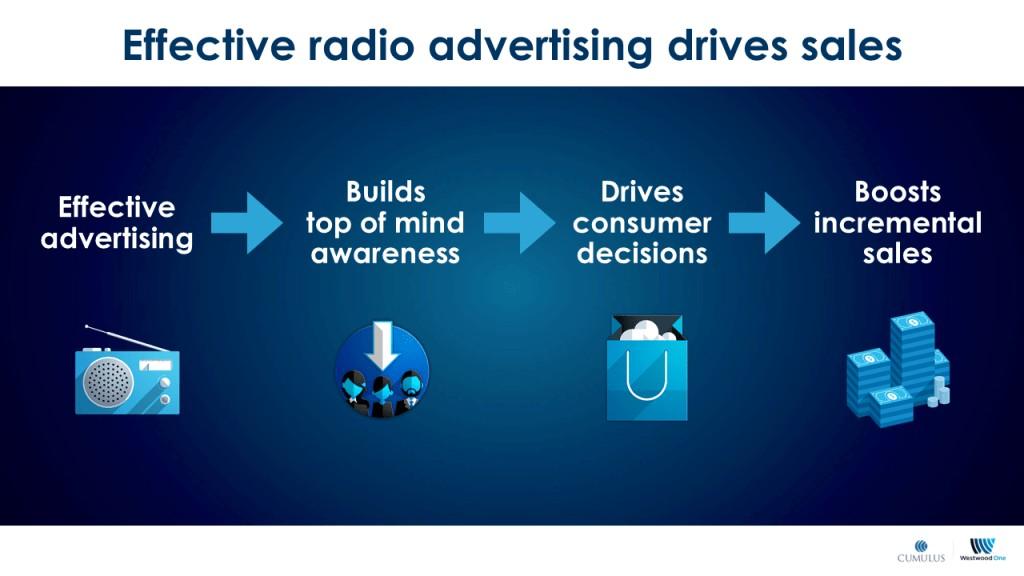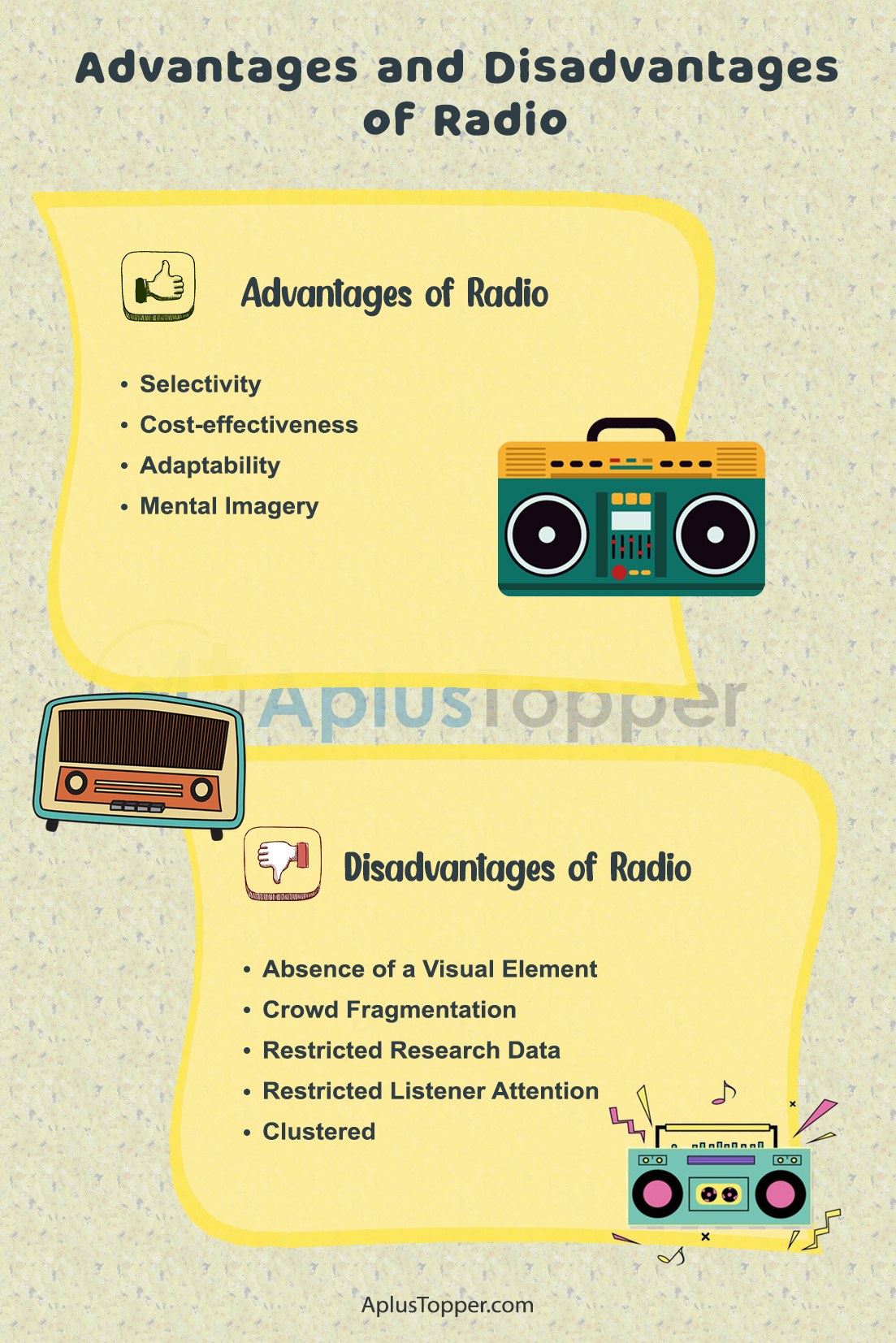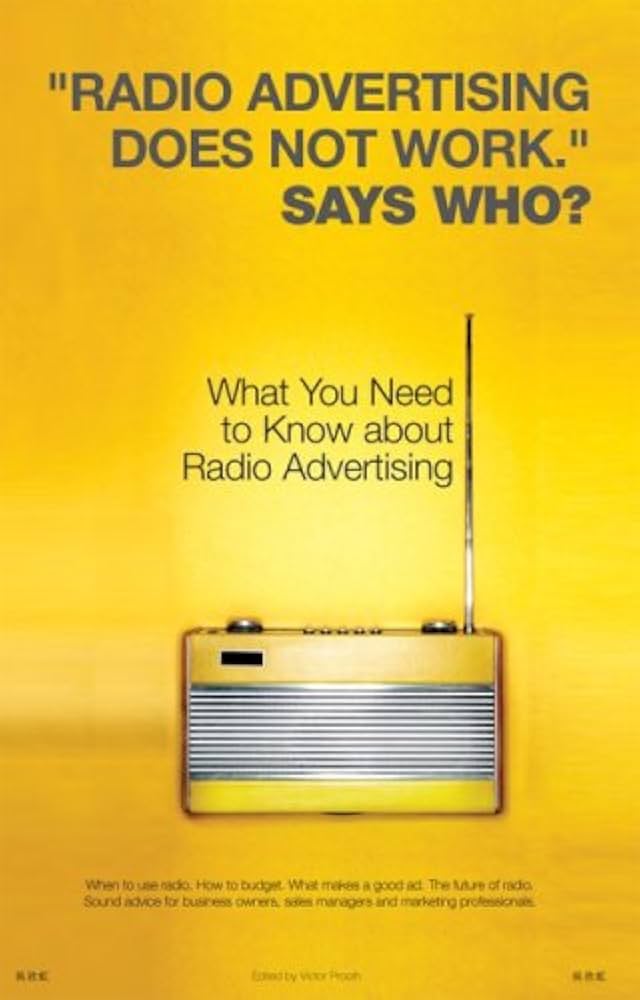In an era dominated by digital marketing, the effectiveness of traditional advertising methods like radio is often questioned. Yet, radio advertising continues to hold a significant place in the media landscape, reaching millions of listeners daily. With its ability to target specific demographics and local markets, radio offers a unique blend of accessibility and personal connection. But does it truly deliver results in today’s competitive environment? This article explores the impact of radio advertising, examining its strengths, limitations, and relevance in a world increasingly driven by online platforms. Whether you’re a marketer or a business owner, understanding its potential could shape your advertising strategy.
Does Radio Advertising Work?
Radio advertising has been a staple in the marketing world for decades. Despite the rise of digital platforms, radio continues to be a powerful medium for reaching a wide audience. But does it still work in today's fast-paced, digital-first world? Let's explore this question in detail.
See Also What's the Most Wanted Digital Marketing Skills?
What's the Most Wanted Digital Marketing Skills?1. What Are the Benefits of Radio Advertising?
Radio advertising offers several advantages. First, it has a broad reach, allowing businesses to target a diverse audience. Second, it is cost-effective compared to other forms of advertising like television or print. Third, radio ads can be highly localized, making them ideal for small businesses targeting specific geographic areas. Additionally, radio listeners often develop a strong connection with their favorite stations, which can translate into trust for the advertised brands.
2. How Effective Is Radio Advertising in the Digital Age?
In the digital age, radio advertising remains effective due to its ability to complement online strategies. Many listeners tune in during their daily commutes, providing a captive audience. Moreover, radio ads can drive traffic to websites or social media pages, creating a seamless integration between traditional and digital marketing. Studies have shown that combining radio with digital campaigns can increase overall campaign effectiveness by up to 40%.
See Also Best Tradeshow Booth Vendors/Resources?
Best Tradeshow Booth Vendors/Resources?3. Who Is the Target Audience for Radio Advertising?
The target audience for radio advertising varies depending on the station's format. For example, young adults may tune into pop or hip-hop stations, while older demographics might prefer news or classic hits. Advertisers can choose stations that align with their target market, ensuring their message reaches the right ears. Additionally, radio's accessibility makes it a great medium for reaching local communities and niche markets.
4. What Are the Challenges of Radio Advertising?
While radio advertising has many benefits, it also comes with challenges. One major drawback is the lack of visual elements, which can make it harder to convey complex messages. Additionally, listeners may change stations during ad breaks, reducing the ad's impact. To overcome these challenges, advertisers must create engaging, memorable ads that capture attention quickly. Another challenge is measuring the effectiveness of radio ads, as it can be harder to track compared to digital campaigns.
See Also Any Good Book to Read for Learning Social Media Marketing?
Any Good Book to Read for Learning Social Media Marketing?5. How Does Radio Advertising Compare to Other Media?
Radio advertising holds its own when compared to other media. Unlike television, which requires viewers' full attention, radio can be consumed passively, making it ideal for multitasking audiences. Compared to social media, radio offers a less cluttered environment, as there are fewer ads competing for attention. However, it lacks the precise targeting capabilities of digital platforms. Below is a comparison table:
| Medium | Reach | Cost | Targeting |
|---|---|---|---|
| Radio | Broad | Low to Moderate | Localized |
| Television | Broad | High | Limited |
| Social Media | Global | Variable | Highly Targeted |
Radio advertising remains a viable option for businesses looking to reach a wide audience, especially when combined with other marketing strategies. Its unique advantages and ability to adapt to modern trends ensure its continued relevance in the advertising landscape.
See Also 90 Real-World Examples of Made to Stick Principles
90 Real-World Examples of Made to Stick PrinciplesAre radio advertisements effective?

How Do Radio Advertisements Reach Target Audiences?
Radio advertisements are effective in reaching specific target audiences due to their ability to segment listeners by demographics, interests, and geographic locations. Here’s how they achieve this:
- Demographic Targeting: Radio stations often cater to specific age groups, genders, or cultural backgrounds, allowing advertisers to tailor their messages accordingly.
- Geographic Reach: Local radio stations can target listeners in specific regions, making them ideal for businesses focusing on a particular area.
- Time-Slot Optimization: Advertisers can choose specific times of the day when their target audience is most likely to be listening, such as during morning commutes.
What Makes Radio Advertisements Cost-Effective?
Radio advertisements are considered cost-effective compared to other forms of media due to their lower production and placement costs. Here’s why:
- Affordable Production: Creating a radio ad typically requires fewer resources than producing a TV commercial or digital video.
- Lower Placement Costs: Radio airtime is generally less expensive than TV or online ad placements, making it accessible for small businesses.
- High ROI Potential: With the right targeting and messaging, radio ads can deliver a strong return on investment.
How Do Radio Advertisements Build Brand Awareness?
Radio advertisements are highly effective in building brand awareness due to their repetitive nature and wide reach. Here’s how they work:
- Repetition: Frequent airing of ads helps reinforce brand messages in listeners' minds.
- Emotional Connection: The use of sound, music, and voice can create a strong emotional connection with the audience.
- Local Trust: Local radio stations often have loyal listeners who trust the station, which can extend to the brands advertised.
What Are the Limitations of Radio Advertisements?
While radio advertisements have many advantages, they also come with certain limitations. Here are some key points:
- Lack of Visuals: Radio ads rely solely on audio, which can limit the ability to convey complex or visual information.
- Short Attention Span: Listeners may tune out or switch stations during commercial breaks, reducing ad effectiveness.
- Limited Tracking: Unlike digital ads, it’s harder to measure the direct impact of radio advertisements on sales or engagement.
How Do Radio Advertisements Compare to Digital Advertising?
Radio advertisements and digital advertising each have unique strengths and weaknesses. Here’s a comparison:
- Reach: Radio ads can reach audiences in areas with limited internet access, while digital ads are more global.
- Engagement: Digital ads allow for interactive elements, whereas radio ads rely on passive listening.
- Cost: Radio ads are often more affordable for local campaigns, while digital ads can be scaled for broader audiences.
What are 3 disadvantages of radio advertising?

Limited Visual Appeal
One of the primary disadvantages of radio advertising is its lack of visual elements. Unlike television or online ads, radio relies solely on audio, which can limit its ability to engage audiences effectively. Here are some key points:
- No visual branding: Advertisers cannot showcase logos, product designs, or other visual elements that reinforce brand identity.
- Reduced memorability: Without visuals, listeners may find it harder to remember the ad or the product being promoted.
- Limited creativity: The absence of visuals restricts the creative options available to advertisers, making it harder to stand out.
Short Lifespan of Ads
Radio ads have a very short lifespan, as they are broadcasted once and then disappear unless repeated. This can be a significant drawback for advertisers. Consider the following:
- No replay option: Unlike digital ads, listeners cannot replay or revisit a radio ad if they miss it.
- Time-sensitive: Ads must be timed perfectly to reach the target audience, as listeners may tune in or out at any moment.
- Frequent repetition required: To ensure the message is heard, advertisers often need to pay for multiple airings, increasing costs.
Difficulty in Targeting Specific Audiences
Radio advertising often struggles with targeting specific demographics effectively. While some stations cater to niche audiences, the reach can still be broad and less precise. Key issues include:
- Limited audience segmentation: Radio stations may not have detailed data on listener demographics, making it harder to target specific groups.
- Overlap with irrelevant audiences: Ads may reach listeners who are not part of the intended target market, wasting resources.
- Lack of personalization: Unlike digital platforms, radio cannot tailor ads based on individual listener preferences or behaviors.
Competition for Listener Attention
Radio listeners are often engaged in other activities, such as driving or working, which can make it challenging to capture their full attention. This issue is compounded by:
- Background noise: Listeners may not hear the ad clearly due to environmental distractions.
- Ad fatigue: Frequent ads can lead to listener disengagement or tuning out.
- Limited engagement: Without interactive elements, listeners cannot engage directly with the ad, reducing its impact.
Measurement and Tracking Challenges
Measuring the effectiveness of radio ads can be difficult compared to digital advertising, where metrics are more precise. Key challenges include:
- No direct tracking: Unlike online ads, radio ads cannot be directly tracked for clicks, conversions, or engagement.
- Reliance on surveys: Advertisers often depend on listener surveys, which can be time-consuming and less accurate.
- Difficulty in attributing results: It can be hard to determine whether a sale or action was directly influenced by a radio ad.
How much does a 30 second radio ad cost?
Factors Influencing the Cost of a 30-Second Radio Ad
The cost of a 30-second radio ad varies significantly based on several factors. These include:
- Market Size: Larger markets like New York or Los Angeles are more expensive than smaller, regional markets.
- Time Slot: Prime time slots, such as morning or evening rush hours, cost more than off-peak hours.
- Station Popularity: Highly rated stations charge higher rates due to their larger audience.
- Ad Frequency: Running the ad multiple times can reduce the cost per spot through bulk discounts.
- Production Quality: Professionally produced ads with voiceovers and sound effects may incur additional costs.
Average Cost of a 30-Second Radio Ad in Different Markets
The average cost of a 30-second radio ad can range widely depending on the market:
- Major Markets: In cities like New York or Chicago, costs can range from $500 to $5,000 per spot.
- Mid-Sized Markets: In cities like Denver or Portland, costs typically range from $200 to $1,000 per spot.
- Small Markets: In smaller towns or rural areas, costs can be as low as $50 to $200 per spot.
How Ad Length Affects Pricing
The length of the ad directly impacts its cost. A 30-second radio ad is often priced differently compared to longer or shorter ads:
- Shorter Ads: A 15-second ad may cost 50-70% of a 30-second ad, making it a budget-friendly option.
- Longer Ads: A 60-second ad can cost 1.5 to 2 times more than a 30-second ad, offering more time to convey a message.
- Custom Packages: Some stations offer bundled pricing for ads of varying lengths.
Negotiating Rates for Radio Advertising
Negotiating the cost of a 30-second radio ad can lead to significant savings. Consider the following strategies:
- Bulk Purchases: Buying multiple ad spots can reduce the cost per spot.
- Long-Term Contracts: Committing to a longer advertising period may secure discounted rates.
- Off-Peak Slots: Advertising during less popular times can be more affordable.
Additional Costs Associated with Radio Ads
Beyond the base cost of a 30-second radio ad, there are additional expenses to consider:
- Production Fees: Hiring professionals for scripting, voiceovers, and sound design can add to the cost.
- Licensing Fees: Using copyrighted music or sound effects may require licensing payments.
- Agency Commissions: If working with an advertising agency, they may charge a commission on top of the ad cost.
How effective is local radio advertising?
Why Local Radio Advertising is Cost-Effective
Local radio advertising is highly cost-effective due to its ability to reach a targeted audience at a lower cost compared to other media platforms.
- Affordable rates: Local radio stations often offer competitive pricing, especially for small businesses.
- High reach: Radio has a broad audience, including commuters and local residents, ensuring your message is heard by many.
- Flexible budgets: Advertisers can choose from various time slots and packages to fit their budget.
How Local Radio Builds Brand Awareness
Local radio advertising is a powerful tool for building brand awareness within a specific community.
- Frequent exposure: Repeated ads on local radio stations help reinforce brand recognition.
- Local connection: Radio ads often feature local voices and references, creating a sense of familiarity.
- Emotional engagement: The auditory nature of radio can evoke emotions, making the brand more memorable.
The Role of Local Radio in Driving Immediate Action
Local radio advertising is effective in driving immediate action from listeners.
- Call-to-action: Ads often include prompts like Call now or Visit today, encouraging quick responses.
- Time-sensitive offers: Limited-time promotions create urgency, prompting listeners to act fast.
- Local relevance: Ads tailored to local events or needs resonate more, increasing the likelihood of action.
Targeting Specific Demographics with Local Radio
Local radio allows advertisers to target specific demographics effectively.
- Station formats: Different stations cater to specific age groups, interests, and lifestyles.
- Time slots: Ads can be scheduled during peak listening hours for the desired audience.
- Local insights: Radio stations often have deep knowledge of their audience, enabling precise targeting.
The Impact of Local Radio on Community Engagement
Local radio advertising fosters community engagement by connecting businesses with their local audience.
- Local events: Ads promoting community events or sponsorships build goodwill.
- Trusted medium: Many listeners trust local radio as a reliable source of information.
- Interactive opportunities: Radio shows often include call-ins or contests, increasing engagement with the brand.
Frequently Asked Questions from Our Community
Does radio advertising still work in the digital age?
Radio advertising remains a powerful tool, even in the digital age. Despite the rise of online platforms, radio continues to reach a broad and diverse audience, including commuters, workers, and people in areas with limited internet access. Its ability to deliver localized and targeted messages makes it effective for businesses aiming to connect with specific communities. Additionally, radio ads can complement digital campaigns, creating a multi-channel marketing strategy that reinforces brand awareness.
How effective is radio advertising for small businesses?
For small businesses, radio advertising can be highly effective due to its cost-efficiency and ability to target local audiences. Unlike national campaigns, local radio ads are often more affordable and allow businesses to focus on their immediate market. The personal and engaging nature of radio also helps build trust and familiarity with listeners, which is crucial for small businesses looking to establish a loyal customer base.
What are the advantages of radio advertising over other media?
Radio advertising offers several unique advantages over other media. It provides immediate reach, as listeners can hear ads in real-time, whether they're at home, in the car, or at work. Unlike visual media, radio ads rely on audio storytelling, which can create a strong emotional connection with the audience. Additionally, radio is less cluttered than digital platforms, meaning ads are less likely to be skipped or ignored. Its flexibility in terms of ad length and scheduling also makes it a versatile choice for advertisers.
Can radio advertising drive online traffic and sales?
Yes, radio advertising can effectively drive online traffic and sales. By including call-to-action phrases such as website URLs, promo codes, or social media handles, businesses can direct listeners to their online platforms. Many radio stations also integrate their ads with digital campaigns, such as streaming services or social media, to amplify their reach. The combination of radio's broad audience and targeted messaging can lead to measurable increases in website visits, online engagement, and conversions.
Leave a Reply


Articles of interest